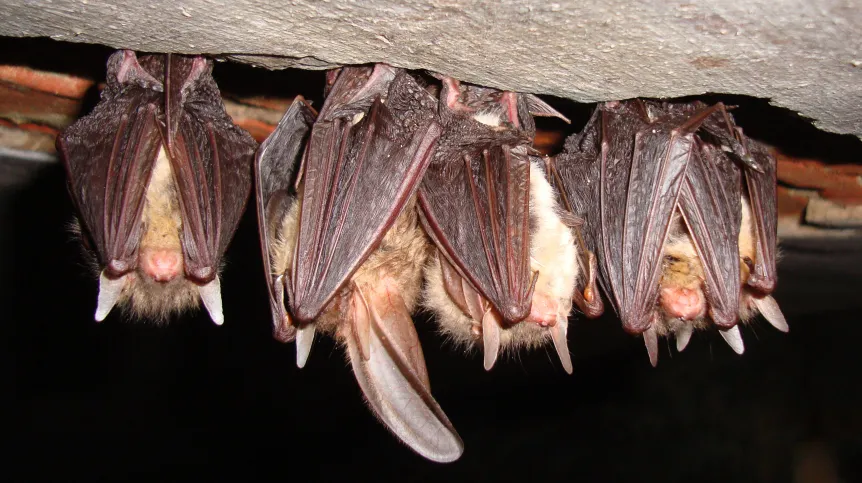
Scientists and park employees from the Roztocze National Park carried out a 13-year-long research project looking at the importance of hideouts in human buildings for protected species of mammals, when most forests do not meet the conditions for safe wintering.
Publishing their results in the Journal of Vertebrate Biology, Dr. Przemyslaw Stachyra from the Roztocze National Park, Dr. Michał Piskorski from the Maria Curie-Sklodowska University, Mirosław Tchórzewski and Klaudia Łopuszyńska-Stachyra from the Roztocze National Park and Dr. Robert Mysłajek from the University of Warsaw said: “Historically the majority of bats in Europe were associated with forests, where these flying mammals sought food and hiding places in tree hollows and spaces under protruding bark.
“Unfortunately, today's forests, with their poorer species composition, a small proportion of old stands and scarcity of dead trees, offer bats fewer hideouts than primeval forests. As a result, today many bats living in the forests find shelter in buildings.”
In their search of hibernating bats, every winter from 2009 to 2021 the researchers examined root crop cellars and basements of buildings. In total, they recorded 310 bats of 9 species. The most common species was the brown long-eared bat, which accounted for more than 60 percent of spotted bats, followed by the western barbastelle (20 percent) and Natterer's bat (14 percent).
The remaining, less abundant species included the grey long-eared bat, the greater mouse-eared bat, the Bechstein's bat, the Daubenton's bat, the whiskered bat and the serotine bat.
BATS LIKED OLD-GROWTH FORESTS
Study author Dr. Przemyslaw Stachyra said: “We are especially happy to have found the western barbastelle and the Bechstein's bat in the cellars - species that are the subject of protection of the Natura 2000 area 'Central Roztocze', the boundaries of which match those of the Roztocze National Park.”
He added that the bats are typically found in well-preserved deciduous patches of natural forest, protected in the national park.
The research results will be the basis for further efforts to protect the bats’ wintering places. The Roztocze National Park actively protects a dozen root crop cellars. To improve the hibernation conditions of bats, these objects are sealed and protected from human entry, their interiors enriched with a mosaic of ceramic parts (such as cellular bricks) to provide shelter for the species that prefer crevices. In addition, in one of the old forest settlements a special underground wintering place was created in a renovated basement, with a wooden building with a system of slotted boxes in its vicinity, intended to be used by bats during reproduction.
OUR ALLIES IN THE FIGHT AGAINST INSECTS
The study’s co-author, Dr. Robert Mysłajek from the Faculty of Biology of the University of Warsaw said: “The protection of bats is important not only for biodiversity conservation, but also for utilitarian reasons. Bats living in Europe eat mainly insects, many of which are the species that destroy crops and damage forests, which means that these mammals provide many valuable ecosystem services.”
The scientists hope that the efforts of the Roztocze National Park will improve the situation of bats, providing them with convenient places for hibernation and reproduction.
Bat conservation projects implemented by the Roztocze National Park are financed by the Forest Fund of State Forests, the Regional Fund for Environmental Protection and Water Management in Lublin and European funds from the Operational Programme Infrastructure and Environment 2014-2020.
Full version of the article 'Importance of anthropogenic winter roosts for endangered hibernating bats ' is available from January 12 in the Journal of Vertebrate Biology.
PAP - Science in Poland
kol/ agt/ kap/
tr. RL













